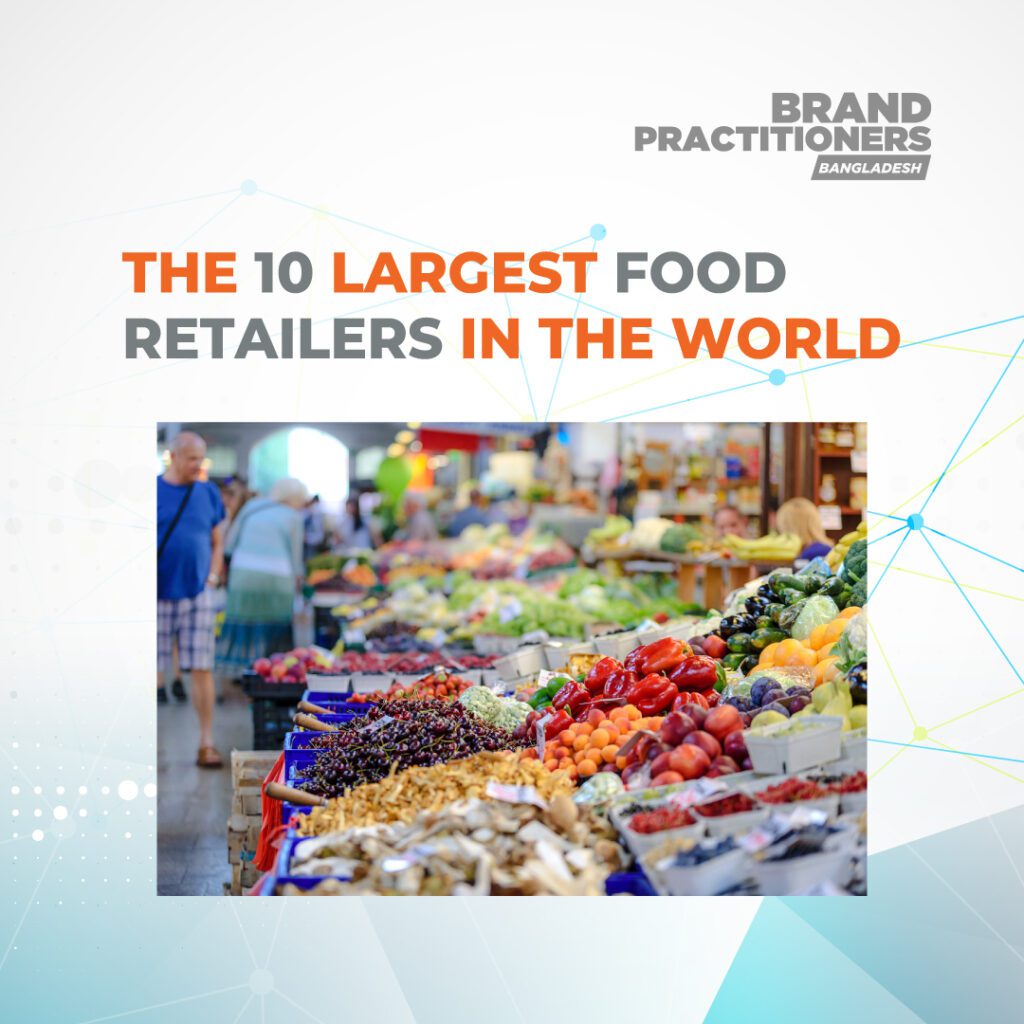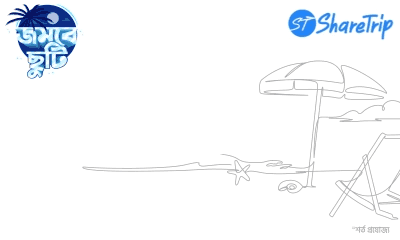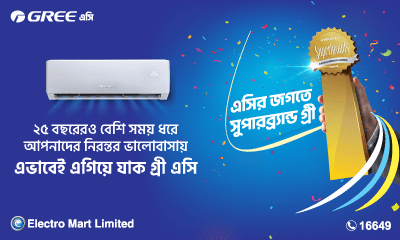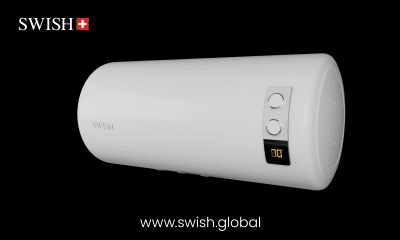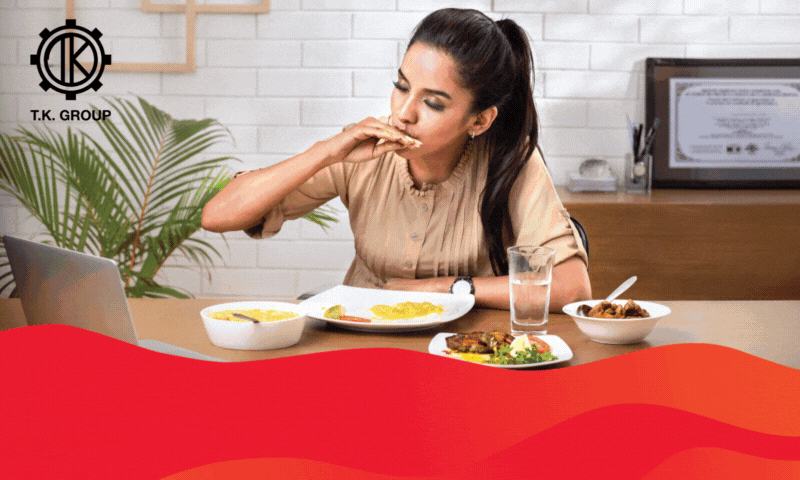Walmart
- Headquarters: Bentonville, Arkansas
- Stock Ticker: WMT
- Market Cap: $408.44 billion
- 2021 Revenue: $559.151 billion
- Net Income: $14.88 billion
Walmart is the world’s largest food and general merchandise retailer, with over 11,500 stores across 27 countries. These are mostly hypermarkets that house not only groceries, but also pet shops, pharmacies, and cellular phone stores.
The company also operates:
- Discount stores. Walmart operates general merchandise discount stores that are smaller than their typical hypermarkets and offer a more limited range of products.
- 374 of these currently exist, as of early 2021.
- Neighborhood markets. Walmart neighborhood markets are typically a fifth of the size of their normal hypermarkets and focus on the three sales categories of groceries, pharmacy, and fuel.
- Walmart generates more revenue and employs more workers than any other private company on the planet, staffing over 2.2 million workers.
- They also own major subsidiary brands such as Sam’s Club, a chain of grocery and general merchandise stores.
Costco Wholesale
- Headquarters: Issaquah, Washington
- Stock Ticker: COST
- Market Cap: $157.32 billion
- 2021 Revenue: $195.929 billion
- Net Income: $3.66 billion
Costco is the second-largest food retailer after Walmart, and the world’s largest retailer of specific products such as organic food, rotisserie chicken, and prime beef.
- The company manages and operates a chain of membership-only warehouse clubs that sell groceries, frozen goods, clothing, and electronics.
- Costco’s business model focuses on lowering costs to offer competitive product pricing to consumers.
- A few major strategies the company employs towards this end include:
- Bulk purchasing and lower variety of inventory. Costco carries only 2,700 different products, in comparison to its main competitor Walmart’s 140,000.
- This lowers labor costs associated with organizing and stocking items on shelves. Costco is also able to buy inventory in greater bulk, lowering supply costs.
- Food court. Most Costco locations host a food court and seating area. These offer a low-priced menu that serves as a loss leader, attracting customers and encouraging them to stay within the store.
- Membership benefits. Costco offers many benefits to its members that incentivize greater sales, such as cashback and other rewards.
- As of early 2021, there are 795 Costco locations across the world. Nearly 600 of these are in the United States, with the remaining spread across mostly Canada, Mexico, and the United Kingdom.
- It also owns a single location in both China and New Zealand.
- Costco is currently looking to expand aggressively in China and tap into the country’s massive customer base.
7-Eleven
- Headquarters: Dallas, Texas
- Stock Ticker: N/A
- Market Cap: $34.231 billion
- 2021 Revenue: $69.15 billion
- Net Income: $678 million
7-Eleven is a multinational chain of convenience stores that operates, licenses, and franchises a total of 71,000 locations across 17 countries.
- In the United States, 7-Eleven typically doesn’t sell any groceries. Their primary products are snacks, soft drinks, and deli items such as sandwiches and salads.
- Other popular items sold at 7-Eleven include coffee and Slurpees, a partially-frozen sugary drink.
- In Asian countries, however, 7-Eleven stores are often much more expansive and offer a greater variety of food items.
- Japanese locations have full grocery aisles, packed with fresh fruits, vegetables, and meats. They also often sell pre-cooked and fully prepared meals for purchase.
Kroger
- Headquarters: Cincinnati, Ohio
- Stock Ticker: KR
- Market Cap: $25.24 billion
- 2021 Revenue: $137.9 billion
- Net Income: $3.11 billion
Kroger is the fifth-largest grocery supermarket in the United States and the second-largest general merchandise retailer.
- As of early 2021, the company owns and operates a collection of 2,750 multi-department stores and supermarkets.
- It also produces much of its inventory through its 35 food processing facilities located mainly across the Southern and Midwestern United States. These include 18 dairy plants, ten bakeries, and seven grocery plants.
- Approximately 30% of Kroger’s food products are produced under their brand names. Some major examples include:
- Private Selection. Private Selection offers gourmet and regional foods that are pricier and marketed as being more upscale than Kroger’s standard brand products.
- Simple Truth. Simple Truth is the retailer’s flagship organic and natural brand. It was founded in 2012 and is now one of its fastest-growing and best-selling segments.
- Simple Truth was also Kroger’s first offering in the Chinese market and can be purchased through Alibaba.
- The brand accounted for over $3.4 billion in sales in 2020 alone.
- Murray’s Cheese. Murray’s Cheese is an artisanal and specialty cheese shop that can be found at hundreds of Kroger locations nationwide.
- Kroger employs most of its 435,000 employees through collective bargaining agreements with United Food and Commercial Workers (UFCW).
Lidl
- Headquarters: Neckarsulm, Germany
- Stock Ticker: N/A
- Market Cap: N/A
- 2021 Revenue: $5.09 billion
- Net Income: $1.55 billion
Lidl is a multinational chain of discount supermarket stores that operates across Europe and the United States.
- The vast majority of these 12,000 stores are located in the European Union. There are currently only 103 stores in the United States.
- The company’s business model follows a “pass-the-savings-to-the-consumers” strategy, minimizing all possible operational and labor costs so that their stores may offer drastically lower prices than their competitors.
- A few major examples of these cost-cutting methods include minimizing waste, employing minimal staff, and displaying most products in their original packaging.
- This strategy is similar to that of Aldis, another supermarket chain that is also Lidl’s leading competitor.
- Another unique aspect of Lidl stores is their “special weekly offers” section, which constantly updates a weekly selection of especially low-priced food items.
- Lidl is currently pursuing a major initiative in 2021 to open an additional 50 stores in the United States by the end of the year.
- The company is owned by the Schwarz Group, a family-owned corporation that also owns the major supermarket chain Kaufland.
Aldi
- Headquarters: Essen, Germany (Aldi Nord) Mulheim, Germany (Aldi Sud)
- Stock Ticker: N/A
- Market Cap: N/A
- 2021 Revenue: $121.1 billion
- Net Income: $968 million
Aldi is another multinational chain of discount supermarkets that follows a super business model as that of Lidl, its main competitor.
- Like Lidl, Aldi minimizes overhead and labor costs through cost-cutting measures such as selling products in their original packaging and allowing customers to pick items straight out from their cartons.
- The store then passes these savings onto the customer through extremely low prices that make them a more affordable alternative over competing retailers.
- A few ways that Aldi’s business model and offerings differ from Lidl include:
- Aldis offers fewer branded products than Lidl.
- Aldi advertises across Europe, while Lidl mainly focuses on Germany.
- Inventory sourcing. Aldi sources inventory from many countries.
- In contrast, Lidl produces almost all inventory of any given item in a single European Union country and then distributes it across their entire worldwide chain.
- There are currently over 10,000 Aldi stores across 20 countries worldwide. In the United States, 2,000 locations employ a total of 25,000 workers.
Carrefour
- Headquarters: Boulogne-Billancourt, France
- Stock Ticker: N/A
- Market Cap: $13.8 billion
- 2021 Revenue: $87.888 billion
- Net Income: $1.58 billion
Carrefour is a chain of hypermarkets, supermarkets, and department stores that offer groceries and general merchandise.
- As of early 2021, there are currently 12,225 locations spread primarily across Europe and Asia. There are also locations in North Africa and the Middle East.
- The majority of the stores within Europe are convenience stores and smaller supermarkets, while those located in China are mostly hypermarkets.
- Carrefour is currently pursuing a major initiative called “Carrefour 2022.” The company seeks to hit its targets in developing many new organic products and limiting food waste by the year 2022.
- During the covid-19 pandemic, Carrefour was the first retailer in France to join C’est qui le Patron, an initiative for companies to share a portion of their profits with workers and direct victims impacted by the virus.
AEON
- Headquarters: Chiba, Japan
- Stock Ticker: TYO: 8267
- Market Cap: $7.82 billion
- 2021 Revenue: $77.69 billion
- Net Income: ¥52,707 million
AEON, formerly known as JUSCO, is a chain of grocery and general merchandise retail stores located in Japan and the Greater China region.
- There are currently 300 stores located in Japan, mostly operating within shopping malls.
- The store is not to be confused with its parent company ÆON, which operates a much greater number of unrelated stores, such as electronics and footwear retailers.
Tesco
- Headquarters: England, United Kingdom
- Stock Ticker: TSCO
- Market Cap: $32.35 billion
- 2021 Revenue: $75.022 billion
- Net Income: $1.59 billion
Tesco is a general merchandise and grocery retailer with stores primarily operating in Europe.
- There are Tescos located in five European countries, as well as 11 additional countries worldwide. The company is the market leader of the United Kingdom’s grocery industry, possessing a market share of 28.4%.
- Tesco used to also operate in the United States, but pulled out due to declining sales in 2013.
- The company is the ninth-highest revenue-generating retailer in the world and the third-highest by gross revenue.
- Tesco’s main business strategy is to occupy the niche of being a high-volume low-cost retailer. They source their inventory in great bulk at low cost and then pass those savings onto consumers.
- By offering affordable prices, Tescos can attract customers from a wide range of socioeconomic groups and outcompete other retailers.
- The company’s two most popular brands are its affordable “Tesco Value” label and its more premium “Tesco Finest” items.
- Tesco recently acquired the food wholesaler company Booker Group in 2018 and also owns other grocery brands such as Budgens and Londis.
Target
- Headquarters: Minneapolis, Minnesota
- Stock Ticker: TGT
- Market Cap: $94.58 billion
- 2021 Revenue: $93.561 billion
- Net Income: $2.987 billion
Target is the eighth-largest retailer in the United States, owning and operating 1844 stores throughout the country.
- The company’s main retail formats include their hypermarkets, small-format stores, and discount stores.
- Most Targets sell groceries, although only in small quantities and varieties.
- Ex-Target chief executive Gregg Steinhafel once described Target’s operations as the complete opposite of its main competitor, Walmart. He opined that while Walmart was mainly “a grocer that happens to sell general merchandise,” Target is instead a “general merchandiser that happens to sell groceries.”
- However, Target does plan to expand the selection of groceries its stores offer. Most newer stores the company opens follow the “PFresh” format, a store design that possesses a 1,500 square foot grocery section.
- Most of Target’s hypermarkets constructed after 2009 also have PFresh sections, as well as food courts.
More:
The Future Of Marketing: More Creative, Customer-Centric




